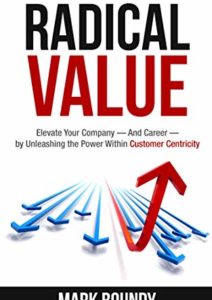Every business in the world has been bombarded with changes. Most headlines emphasize the bad ones, and I don’t want to minimize them. However, there are some significant opportunities among the wreckage. It’s time to think about whether and how you can capitalize.
New Normals….Plural…and one Over-arching Change.
We aren’t in for a single “new normal” but many normals…in a rolling progression. One development is a reality we’ve all know about but has ignored for decades: Long supply chains carry risks that we failed to analyze properly. This doesn’t classify as a black swan that nobody saw coming. Most people knew about and smart ones knew it was inevitable. Most businesses though didn’t calculate the potential costs…That’s not “black swan”; that’s a shortage of vision, which boils down to lack of trusted advisors in selling organizations. Sure, your customers were ultimately responsible, but if your salespeople didn’t help them make a well-informed decision…shame on your sellers.
Your Customers Need Help Rethinking Supply Chains.
Read this article that describes what manufacturers and those who buy manufactured goods/components/commodities are finding out. Ignoring the clickbait headline bit (smart content marketing, BTW) about “including vaccines”; the article is really about how complex the supply chain for everything.
If you sell anything made domestically, you’ve struggled against lower-priced foreign competition. The value of being a domestic supplier didn’t (in your customers’ perception) always overcome your price premium. That isn’t your customer’s fault. It’s yours.
(Re-)Discovering the Value of “Made in USA”
Let’s say you’re an American manufacturer and have struggled against foreign competition. It’s now time, while memories are fresh, to gather customer data on their costs associated with extended supply chains. The data should be your customers, from their perspective, but you need to know how to gather it.
Using a tool I developed, a value network, you can explore all of the outcomes a customer would achieve because you’ve decided to manufacture in America. Obviously, any component of your product not sourced domestically makes your product vulnerable. You’ll to mitigate that vulnerability somehow.
Here’s a quick value network I drafted for a hypothetical product. All of the ovals below the “made in America” feature (the language of the seller) rectangle at the top are expressed as customer outcomes (customer language). Each is a value hypothesis that you should explore with your customers.
Navigating and Using the Value Network
The path down the right side of the network represents a typical “made in America by American workers…save American Jobs” value proposition. The dotted line from this marketing pitch to increase sales and profitability is dotted because, as many companies have found, it works, just not well enough to support many US manufacturers.
The rest of the value network includes 1) arguments proposed for years by some.
- Responsiveness, both in fulfillment and customization,
- Protection of any intellectual property developed by suppliers and/or customers and incorporated in the product or its manufacture.
- Any customer taking advantage of customization might feel that they’ve partnered with a valued vendor resource.
- Some of these outcomes can drive operational efficiencies for both the manufacturer and their customers.
Also, pandemic has 2) grown some formerly “theoretical” costs to “significant”, even “astronomical” in some cases.
- When global trade is impacted by either trade wars or natural disruptions, the flow of essential products –even components of those products — can be interrupted at critical times, which can shut down an entire plant.
- Trying to stay open without some key commodities still bears costs and risks. For example, continuing to operate without sufficient personal protection equipment (PPE) has placed hospitals, factories, retailers, etc. in an impossible squeeze between patient care on one side vs. worker health and/or legal violations (OSHA, union contract law).
- When disruptions cause employees to furlough workers, that sets off a series of costly outcomes: separation costs, risks of best workers being hired away, restart costs, retraining, sense of responsibility for workers, etc.
It’s time for you to find out how significantly all of these value points have impacted customers. You will glad you captured their impressions while they were fresh in the customer’s mind (bedside manner will count a lot. Don’t be that guy/girl).
Value of Risk Avoidance vs. Price Premium
Luckily, humans hate losses twice as much as the desire gains. Once people can clearly articulate losses to themselves and co-workers, they become significant decision criteria. The problem is that risks are difficult for most people to imagine beforehand. Capturing the full impact of these costs right now and helping customers account for them fully in future buying decisions takes some tact, but you’re providing perspective that they need to run their business more effectively and efficiently.
Also, many risks are low-probability/high impact events. That’s fine: simply take the huge cost associated with a risk once a customer calculates their own (validating yours is a second place option) and multiply it by the probability of recurrence, to calculate the statistical expected value.
If your customer thinks that the next pandemic…or trade war…or shooting war that will interrupt international trade is 2% likely, take the huge total cost that you collected with them times 2%. That’s what they should be willing to pay every year to minimize their exposure to that risk.
Walking a customer through this math is a huge help to them:
- In the aftermath of any major disruption, many decisionmakers freeze, because they don’t know what to do.
- In situations like this, purchasing decisions are on hold until the group feels comfortable in their new situation. We’ve all seen decisions go on hiatus for six months after a restructuring…this is no different. The first sales team that helps a buyer get comfortable in their new reality often wins.
- Walking them through a simple arithmetic problem with numbers they produce themselves guides them to the decision they know they should be making anyway. You’re the valued resource helping them act with good judgement at a difficult time.
Want to Talk About It?
If you are struggling with how to sell right now, you’re feeling just what your customer feels. That’s normal. If you put together a plan to help them orient themselves in a new situation, you’re doing both of you a favor. If you’d like some help figuring out how the new set of customer conversations in this “new rolling normals”, I’m happy to help. Contact me.
Not a domestic supplier? We can do a value network for what you do offer. Contact me.
To Your Succes!






Comments